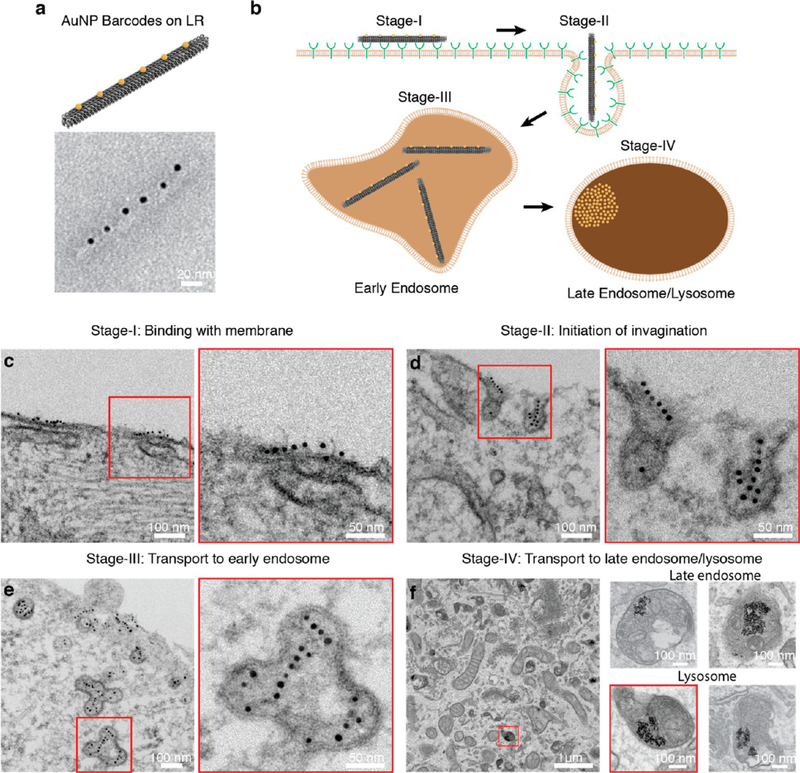Figure 4.
Visualization of the LR cell internalization process in H1299 cells by transmission electron microscopy. (a) 5 nm (diameter) AuNPs were tagged onto LR to form a beads-on-a-string barcoded structure. (b) Proposed model illustrating the internalization process of LRs into H1299 cells based on TEM observations. Four distinct stages were identified in the internalization process of LRs into H1299 cells. (c) Stage I: LRs aligned onto cell membrane longitudinally. The longitudinal alignment may maximize the interaction between LRs and the cell membrane since more scavenger receptors are involved in this orientation. (d) Stage II: cell membrane invagination was initiated to internalize LRs with a transverse orientation. This transverse orientation may help to minimize energy expense by generating smaller membrane invaginations. (e) Stage III: LRs were transported into early endosome-like compartments. The nonspherical, tubular-vesicular like organelles closely resemble early endosomes. At this stage, AuNP barcodes stayed relatively intact, suggesting no severe degradation of LRs had occurred. (f) Stage IV: AuNPs accumulated in late endosome and lysosome-like organelles. At this stage, all AuNPs were clustered within cellular compartments that resemble late endosomes (right panel, top) and lysosomes (right panel, bottom). AuNP barcodes were not identifiable, suggesting that AuNPs may have detached from LRs. AuNPs were not found in other cellular compartments (e.g., golgi, mitochondria), cytosol, or nucleus.

